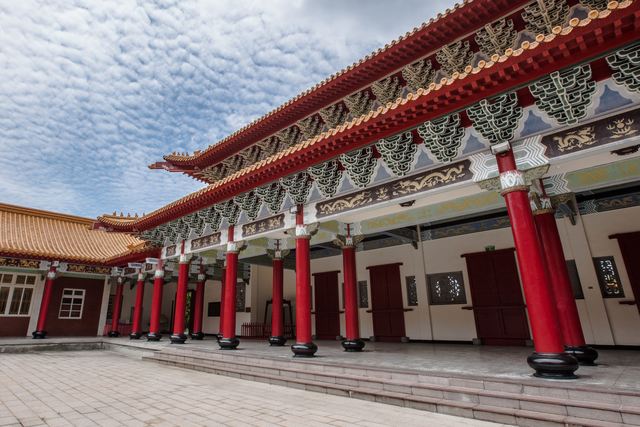Confucian Temple Introduction
The origins of the Taoyuan Confucius Temple date back to the 74th year of the Republic of China, when local residents such as Shi Wanquan and Jian Qibiao initiated the construction of the temple to promote Confucian teachings, which represent Eastern culture, and to serve as a site for Confucius worship. Completed in the 78th year of the Republic of China on Huo Tou Mountain, it is the last official Confucius Temple established in Taiwan. The Taoyuan Confucius Temple is notable for its statue of Confucius in a standing posture, unlike other Confucius temples that typically only have tablets, adding to its aesthetic value. Confucius, known as the "Eastern Socrates," embodies the roles of educator, philosopher, and politician. His profound teachings, including the principles of universal education, filial piety, loyalty, integrity, benevolence, and the appreciation of ritual and music, along with the related texts such as the Six Classics, the Analects, the Great Learning, and the Doctrine of the Mean, have significantly influenced Chinese culture and extended to Northeast and Southeast Asia, garnering attention from modern Western democratic scholars as well. Visiting the Confucius Temple allows one to deeply appreciate the beauty of Chinese architecture; the main building, the Dacheng Hall, is modeled after ancient Chinese palaces, featuring a complex eave design, exquisite paintings, and layers of dougong brackets that convey a grand atmosphere. The golden-red glazed tile roof topped with an owl sculpture represents Confucius's spirit of "universal education." The prominent Dacheng Gate, with its striking vermilion doors, does not depict the traditional door gods, symbolizing the saying in the Analects that "the Master did not speak of strange phenomena, forces, or gods." The 108 door nails symbolize the great respect and dignity afforded to Confucius. The Confucius Temple is a "temple of integrated learning," distinct from general religious temples, serving both worship and educational purposes. Inside the temple, various ceremonial vessels and musical instruments crafted according to ancient traditions are available. Every September 28th, the city government hosts a grand Confucius Ceremony to inherit Confucianism, where students perform rituals and traditional music, showcasing the ceremonial dance of the eight offerings, with the public gathering to observe the solemn event.





































